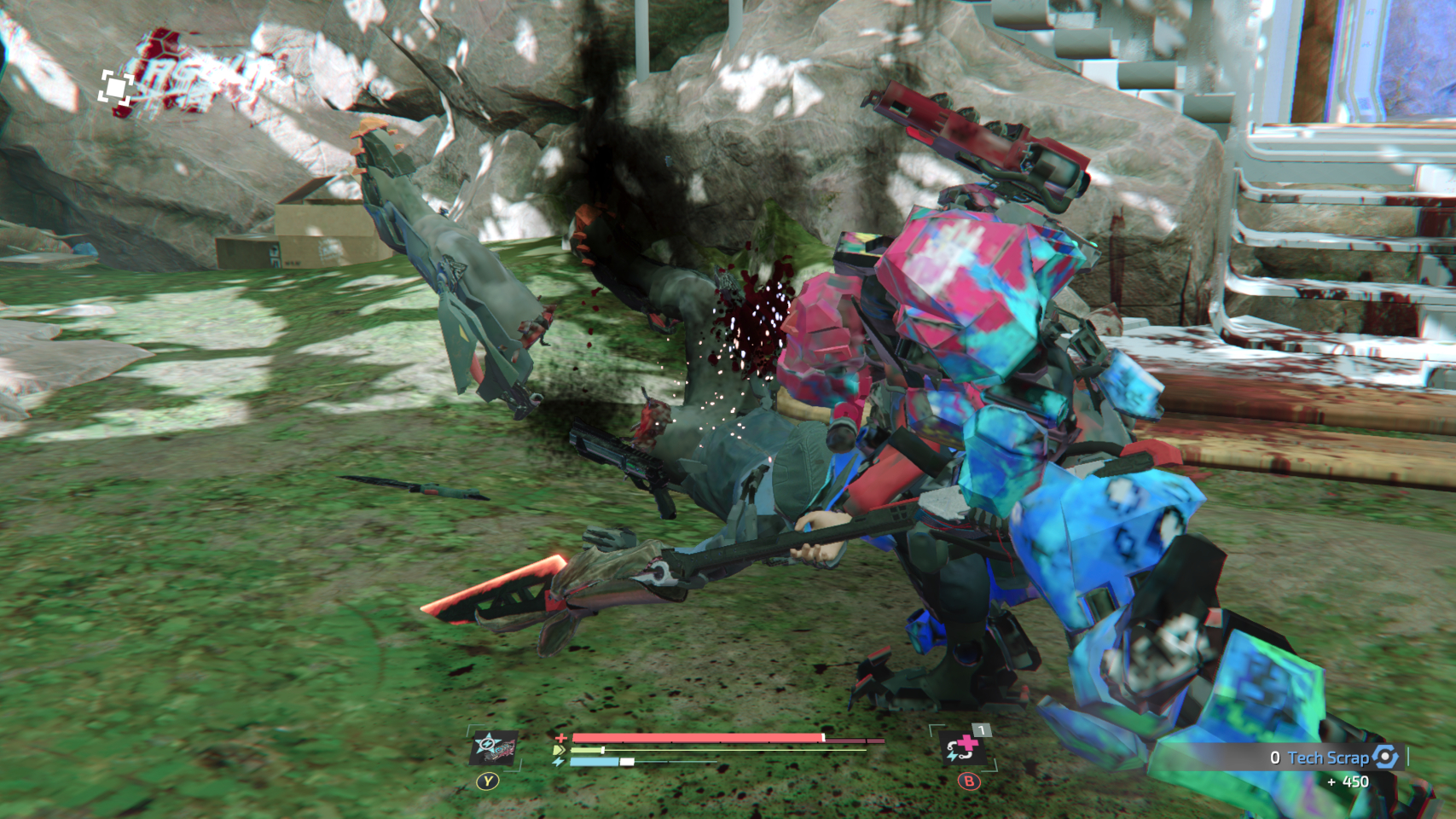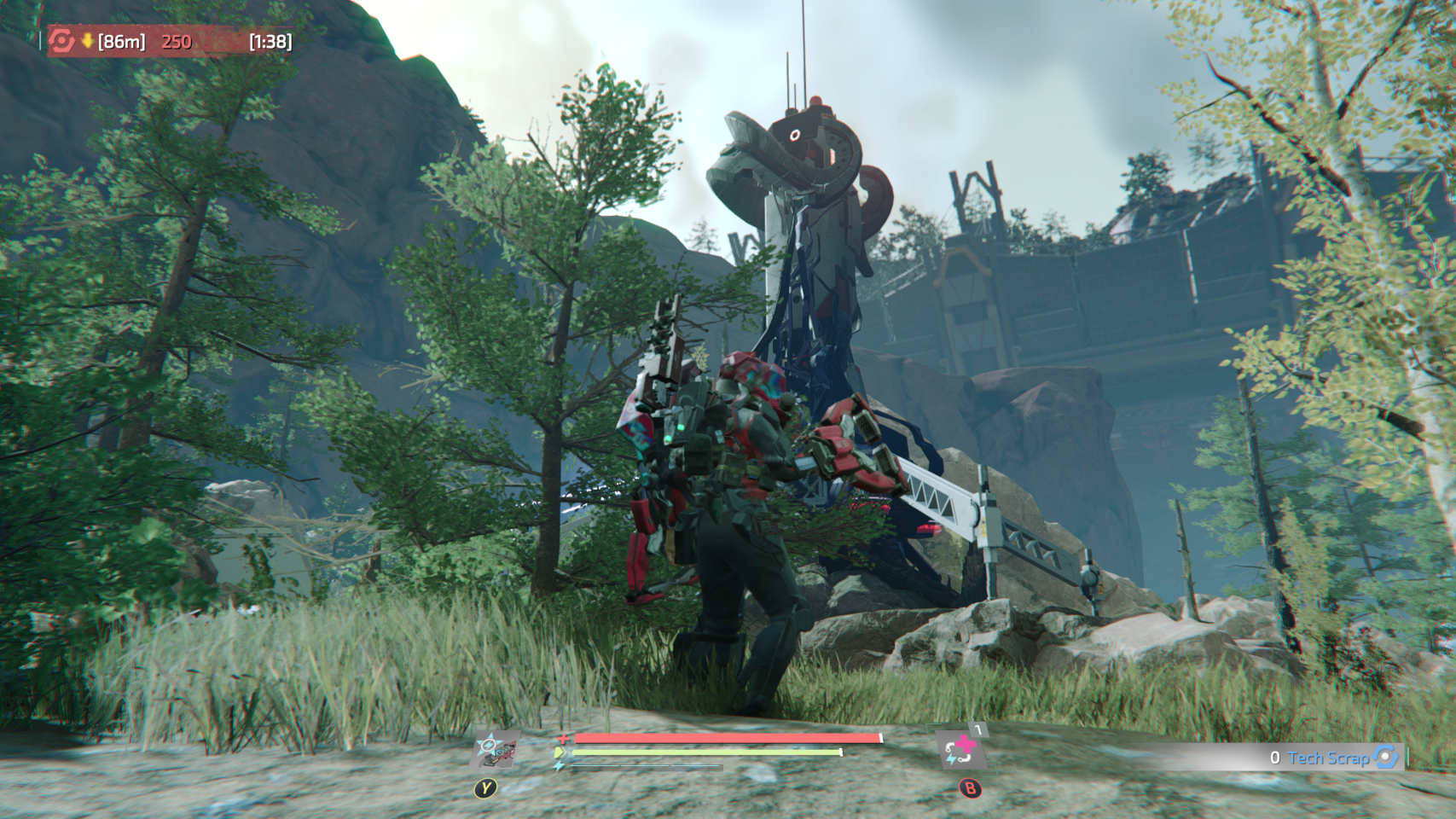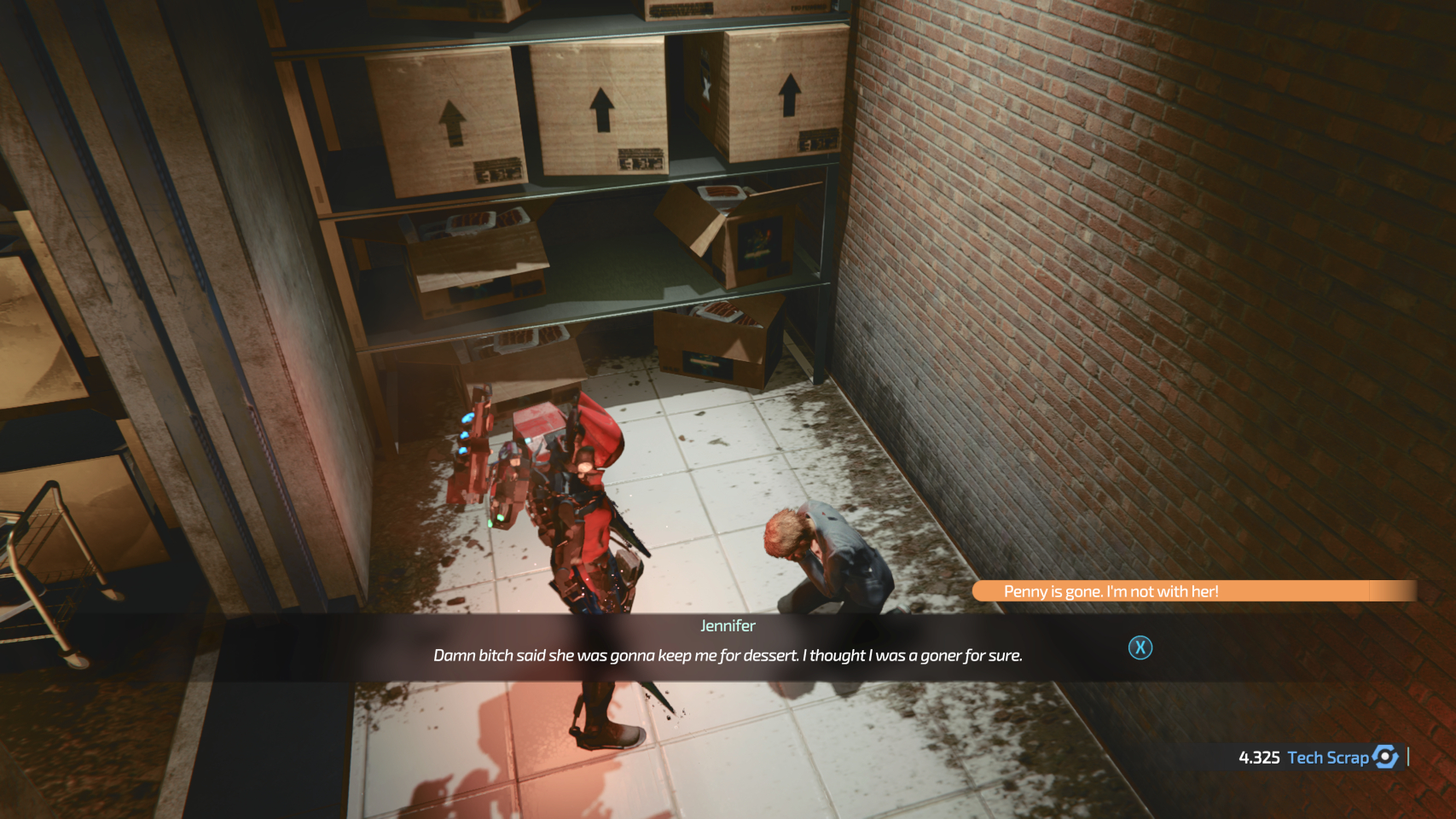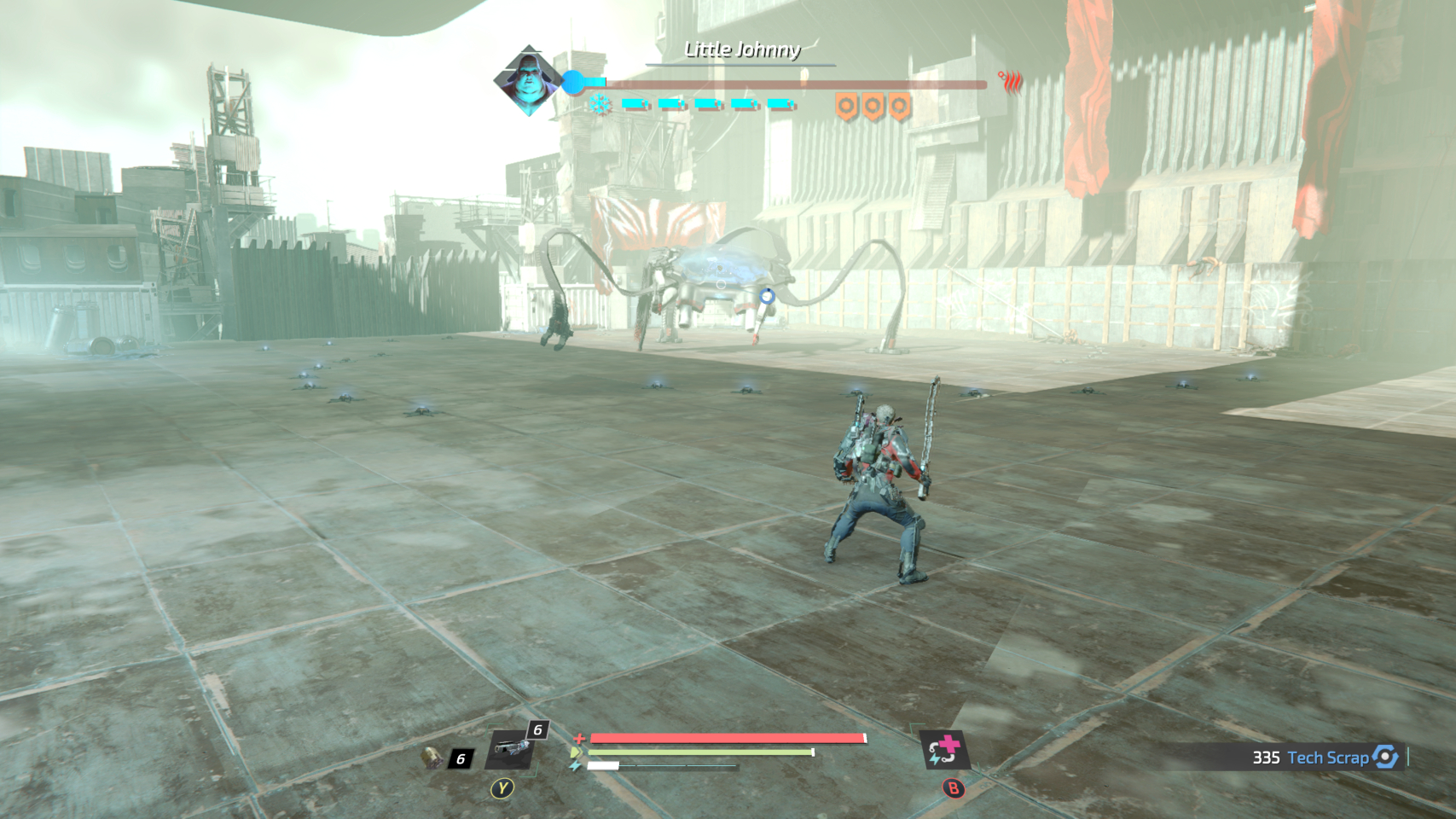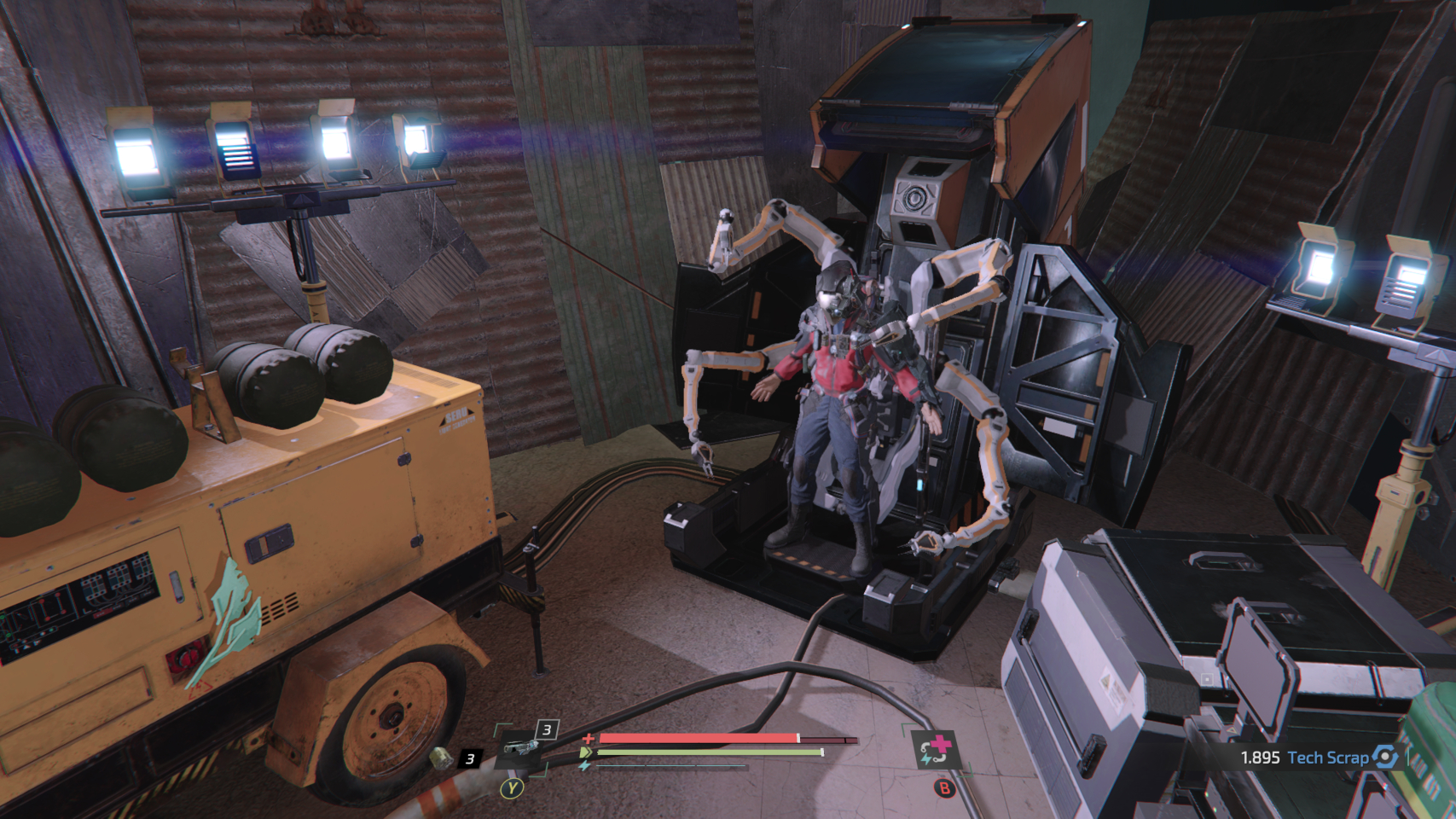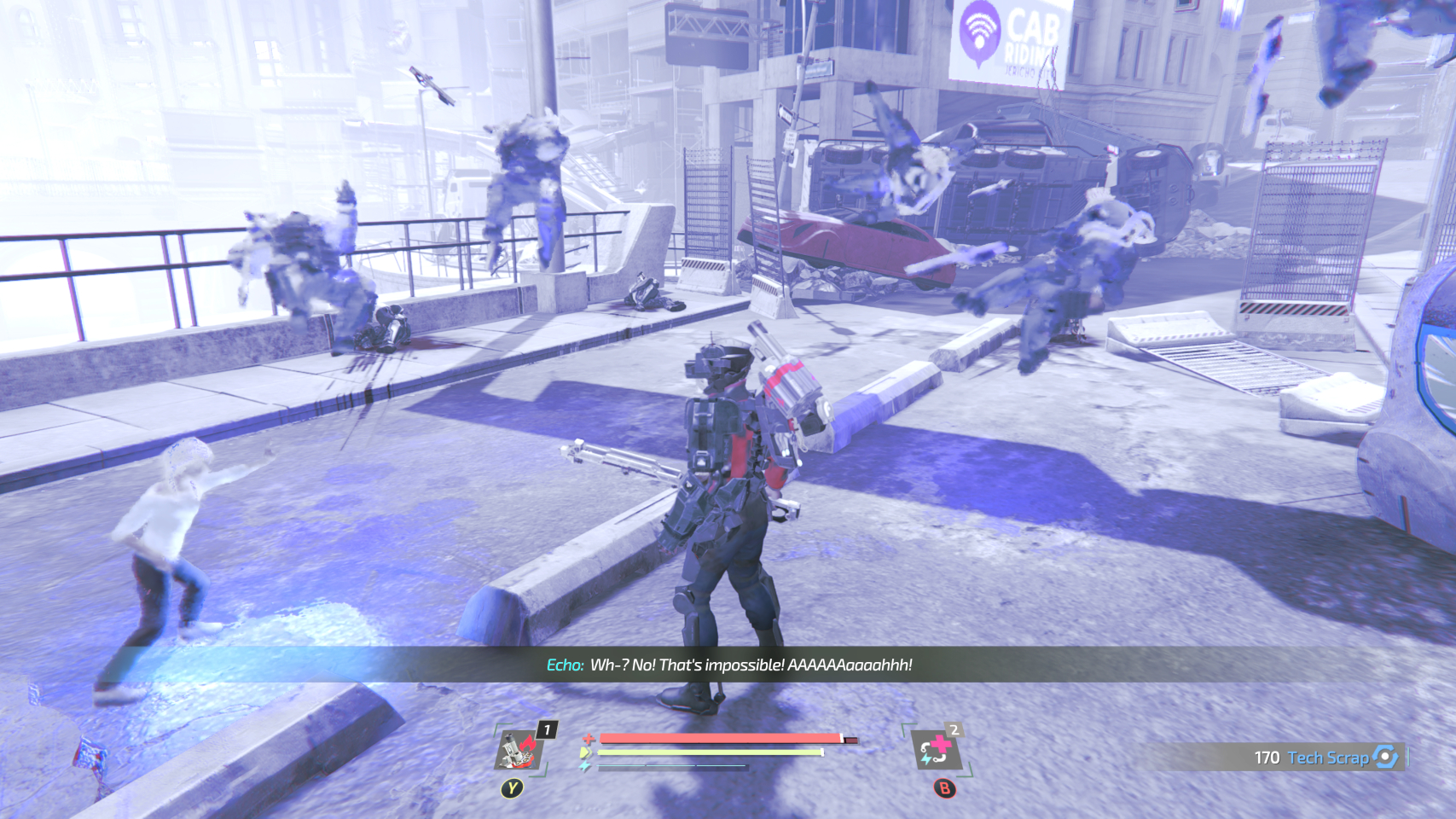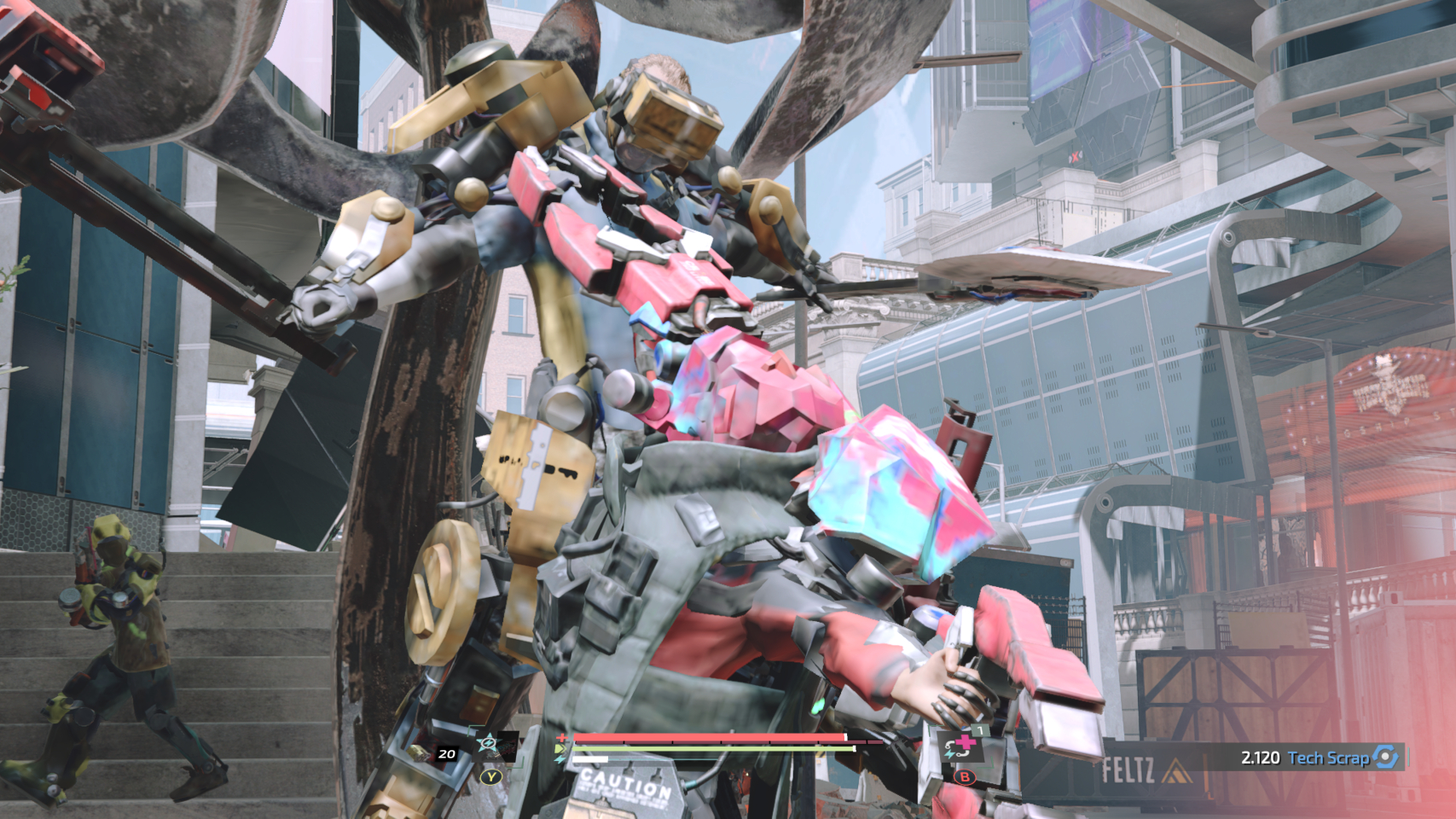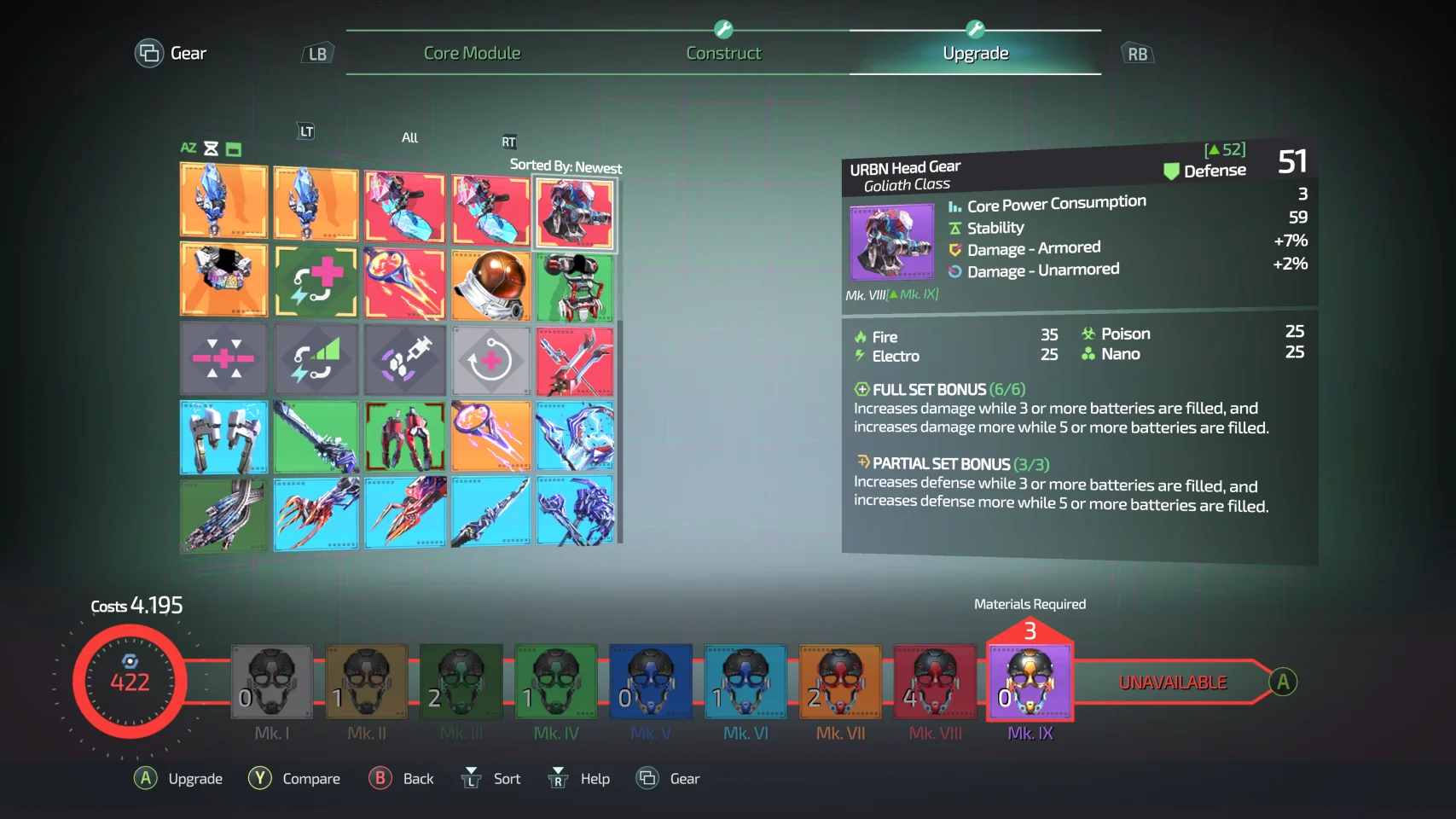Assault and Battery.
While I dipped my toes into the first Surge, when it was too cheap to pass up, It was a title I didn’t really give a fair shake to. I’ve often distanced myself from extremely difficult games, as challenge isn’t really the appeal of gaming to me, though I do understand why it is to many. Games that look to mimic Dark Souls, and that of even Bloodborne, both titles from the now infamous developer, Fromsoft, I usually end up being curious about them, yet never looking to dive in. The Surge 2, on the other hand, was a title that I really wanted to take a crack at and is the first of these types of games I’ve played right through to its final encounter. While I don’t know if it’s convinced me to jump into the titles it’s inspired by, I will say that Surge 2 is one of the best games I’ve played this year.
First off, my experience with Dark Souls and how the game functions is mostly limited to the comparisons I’ve heard through games like Lords of the Fallen, The Surge, Nioh, Ashen, and even the most genre distanced one in Remnant: From the Ashes. While I’m not entirely oblivious to Dark Souls, I have played portions of Dark Souls 2, and even through about a third of Sekiro, It’s clear that Fromsoft has struck gold when they created Demon Souls and then refined the game and that experience into the Dark Souls series, and subsequently into the equally popular Bloodborne. The Surge 2 does borrow several ideas and gameplay mechanics, but to say that the game doesn’t have its own unique identity is a bold-faced lie. The world and gameplay The Surge 2 offers, with its dismantling combat, and the hostile world this adventure takes place in is incredibly impressive and even the feel of combat is more akin to Rocksteady’s Batman franchise with how fast and engaging it can be. To be blunt, The Surge 2 has some of the most impressive combat ever, full stop.
Since I didn’t complete the original Surge, it’s nice to see that very little of that game’s narrative is required to enjoy its distanced sequel. While there are nods and winks to those that have completed it, you can jump into this sequel without even knowing anything about what came before. You play as a new character, one who is the sole survivor of a terrible plane crash as you’re shot down over the city of Jericho. You’ll soon see visions of a mysterious girl and much of the story is through you investigating these visions and how you are connected to them. While the story is fairly thin, even with the added lore provided through its people and side quests, it’s just gripping enough to make you care about your journey and what it means for your own character.
Jericho City itself is a maze of connected paths and while the size of what you can explore may seem small at first, there are so many underground locations and branching paths that the city and what it has to offer later in the game that can make it feel massive and everchanging. Unlocking a path next to the first medbay a few hours in, made me smile, showing me just how far I’d come. To access the switches, panels, and ziplines that allow this method of connection will require abilities and item’s you’ll earn throughout the game. Once you have the ability to utilize all these traversal methods, you can return to several environments and track down new spots where you may have seen some items remain at a distance or gain access to whole new locations. Jericho City is similar in design to what you’d expect from a Souls’like environment and always feels like your exploration is rewarding you. While there isn’t a tradition fast travel system, you do unlock pods much later on that do allow you to zip from a few locations quicker.
Since the game takes place entirely in Jericho City, each sector has its own distinct theme. There are rundown city environments with area’s completely fenced off, or access blocked due to a pile-up of numerous abandoned vehicles. There’s the harbor, a few market locations, and a robust and lush forest biome that is treated more like a park, complete with its own pathed attractions and unique threats. Combine this with armed forces command facilities, moody caves, and other massive outdoor locations, and The Surge 2 has a lot to offer here. That said, I do wish there was a day and night cycle to add even more variety since you do have a flashlight equipped to your suit, but that’s more of a nitpick than a criticism. While not an original concept, players can leave markings on the environment to give you a heads up to a boss, or mark the trail of some hidden loot. These are super useful and there are several other things players can leave you, such as some battery energy when you’ve encountered the body of a newly-deceased player or a banner they’ve left for you to find, dressed up as your own character, snatching it up for some scrap. You’ll even find Revenge enemies that have killed other players that reward a bit more scrap than usual.
Scrap is the name of the game as it will detail out everything you do during your journey, and what you’re working towards. Scrap is used to level you up, assist in upgrading your gear, or crafting new items. Since it’s used for literally everything, knowing when and what to spend it on can impact your experience greatly. Do you save up and gain a few levels to give yourself more health or stamina, or do you sink a ton into your gear and weapons? There is a very delicate balance to how you approach this as it really makes you think about what to spend it on, and should you die with your scrap, you’ll need to traverse back to where you’ve died to collect it before time runs out. Die again before you’ve retrieved it and well, kiss it goodbye. Now, should you be bold enough, you’ll earn more scrap the longer you keep going with it before depositing it into the local medbays and lose that streak bonus. You can also find implants that boost your earnings, allowing you to earn even more and pad those stats even higher.
As you track down medbays and upgrade your gear and items, it acts like the campfire system and refreshes the nearby threats. This allows you to farm locations, while also using all the scrap you’ve earned to sink points into health, stamina, or battery efficiency. You’ll craft new armor sets and weapons, and my god is there is a metric ton of customization here. There are over two dozen different armor sets each with partial and full set bonuses that can dramatically change up your survival chances. The partial aspects let you mix and match to get the most out of your gear. Even the pre-order DLC gear, which I used to completion, required me to cut off the parts I needed from nearby enemies, just to use it. Upon completing the game, and choosing a particular ending, you are gifted another set depending on your choice, the cooler option being the second option, in my opinion. Every time I would encounter a new enemy and target one of the armored segments on their body, I was surprised at just how many times a new item would present itself, or that i’d learn a new schematic to craft something incredible.
Depending on your choice of weapon, combat will be a very different story for you. I opted to use spears pretty exclusively, as the speed and range were just too good to pass up. After killing a mechanized creature in the forest of Gideon Rock, I found a weapon that pretty much carried me for hours into the game, until I found an orange spear that did electrified damage and it was a match made in heaven. I could stab and swirl it around, killing mobs of enemies as they’d rush me. The speed and agility the combat gave me was something I’ve craved in this style of game yet never once found it. While there are slower and more powerful weapons, they remind me of the lethargic combat issues I’ve had with games like this. The Surge 2 also has a stamina gauge that is reflected by your weapon choices, but after sinking enough scrap into it, I found I had just enough to get the job done. Playing the also recent Code Vein, another Dark Souls flavored release, has made me hate stamina bars, but thankfully, that feeling of not having enough never really affected me here.
The Surge 2 will give you what you want from combat and your choice of weapons and gear will tailor-make the experience for you. As you target enemies or swap your focus from foe to foe, you can flick the right stick to pin-point armored zones and then by using a saved up battery, which refreshes as you strike enemies, you can hold X then to chop off that part and gain new items or upgrade components from it, with the occasional battery or pile of scrap dropping as well. While unarmored parts of a foe will take more damage, you won’t earn the proper items needed to keep upgrading your gear or the parts needed to craft within that armor set.
One aspect to why I love The Surge 2 so much is how it allows me to earn my healing. You’ll use the battery system to convert it into health through implants. While there are various other implants used for negating status effects, bonuses when you perform a perfect directional block, or how fast you’ll earn stamina or battery energy, you’ll use healing implants to convert battery energy into health, either directly, or over time with other similar implants. You can bank health when your bar is full, and you can use other implants to increase the speed at which you gain energy, keeping you alive in the fight much longer than normal. This makes Surge 2 more accessible, and those looking for the purer Dark Souls style experience can opt to keep it that way by using other implants or those that make enemies hit harder for other combat perks.
The last aspect to combat that is surprisingly effective is your combat drone. You’ll have a variety of ways to drop turrets or launch firebombs, but the standard ammunition drone is a godsend. You can press Y during combat to bring the little fellow out and keep hammering the button down to pelt a foe with ammo. This helps you with soldiers that are firing guns from afar, or when you have a difficult boss down to its final few moments and just want to end the encounter from a safe distance. It was partly the reason I was able to defeat LIttle Johnny at the start, or the difficult Witch of a Cult Leader later on. The Drone is truly wonderful and I hope the inevitable Surge 3 brings it back.
Being the type of game it is, as well as carrying on what the first game offered, Surge 2 is filled with some powerful and engaging boss encounters. Little Johnny, the fight I just mentioned, is the one featured in the promotional artwork as a three-armed mechanized threat. Apart from the unavoidable strike the final boss can do when you get too close, not a single boss felt impossible. Sure, you’ll hit a wall when you first encounter them, but they are fairly easy to figure out what works and then apply that knowledge to get the upper hand. When I first encounter the creature in Gideon Rock, I could barely make a dent until I defeated a few other mechanized foes and gained access to an orange spear, a weapon I mentioned earlier. By using this and figuring out certain parts of the fight, I managed to defeat it by the skin of my teeth. This became true in nearly every other fight as while they are all in some ways challenging, none of them felt cheap or annoying. Everything The Surge 2 does makes you feel you can do it, regardless of the roadblocks it places in front of you.
Being a Focus Home Interactive title, visual are rarely their strength, but apart from the game appearing too bright and faded in several locations, The Surge 2 is still a fairly good looking game. Now, that said, the only problem I have with any part of the visuals is that the textures on my character would often not load in high clarity. While not a huge issue, it is just unfortunate this happens and didn’t really affect my enjoyment of the game on any significant level. The more creature and metal like aspects to the game truly shine, and bosses and enemies are highly detailed, and the varied armor sets really add a unique style to what the Surge series can offer. There are performance options, but Quality mode may look a tad better but it suffers from a clunky framerate that made me switch back to Performance mode and never look back. Given what Deck13 have done before, I am still impressed with the art direction The Surge 2 offers and am excited to see how much they change it up next time.
I was pleasantly surprised by The Surge 2. It was challenging to the point where encounters didn’t frustrate me as often as I expected they would, and after learning the patterns and finding the weapons that worked to my tastes, the pieces all fell into place and I found what worked for me and kept pushing through. The weapons and armor designs are truly spectacular, and the combat is unbelievably amazing to the point where I would actively seek out enemies to add to my pile of scrap. While I’m not about to dive into the titles inspirations anytime soon, It did give me an appreciation for why people enjoy this style of game. Regardless of whether or not you’re a fan of what the Dark Souls series offers, The Surge 2 is hands down phenomenal and very deserving of your time.
The Surge 2 was purchased by the reviewer and played on an Xbox One X.
All screenshots were taken on an Xbox One X.


